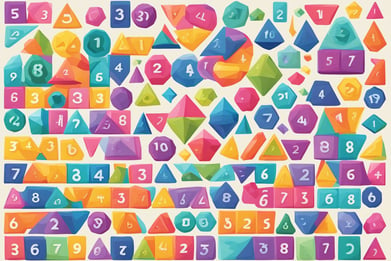Math Development for Kids: Key Developmental Stages
From counting to data analysis, understand key developmental stages.
MATHMATH TODDLERS
11/27/20241 min read
Key Developmental Stages
Mathematics development in children is a structured process encompassing fundamental skills. By focusing on counting, understanding basic operations, and analyzing data, children gain important mathematical insights.
Counting and Cardinality
Counting begins with rote memorization, often as early as age two. Children eventually grasp cardinality, realizing that the last number counted indicates quantity. Recognizing numbers up to 20 is typical by kindergarten. They start comparing quantities using terms like "more" and "less."
Engagement with everyday activities involving numbers, such as counting toys, helps reinforce these skills. Games and songs can make counting enjoyable. Using items, like blocks or snacks, assists with understanding number sets and concepts of "one more" or "one less." Consistent practice aids mastery of this vital foundation.
Operations and Algebraic Thinking
Children encounter basic operations, such as addition and subtraction, around ages 5 to 7. Recognizing patterns and relationships between numbers is crucial to developing algebraic thinking. They begin forming equations using simple problems.
Concrete objects, like counters or fingers, help visualize operations. As they grow, they advance to mental calculations and use abstract symbols. Word problems encourage the practical application of skills. Encouragement and practice pave the way for deeper comprehension of algebraic concepts, fostering critical thinking and problem-solving abilities.
Measurement and Data Analysis
From around age six, children start exploring measurement and data analysis by comparing objects. They learn to measure length, weight, and volume using standard and non-standard units. They begin crafting simple graphs and charts to represent data.
Activities with rulers or measuring cups ground these concepts in real-life experiences. Observational skills are honed through comparisons, such as lightest and heaviest, tallest and shortest. Familiarity with basic statistical concepts develops through sorting and categorizing items. This hands-on approach lays the groundwork for more advanced mathematical skills.


Explore
Discover engaging educational toys and learning tools.
Contact Us
thescholarlysandbox@outlook.com
© 2025. All rights reserved.
Affiliate disclosure: As an Amazon Associate, we may earn commissions from qualifying purchases from Amazon.com.
